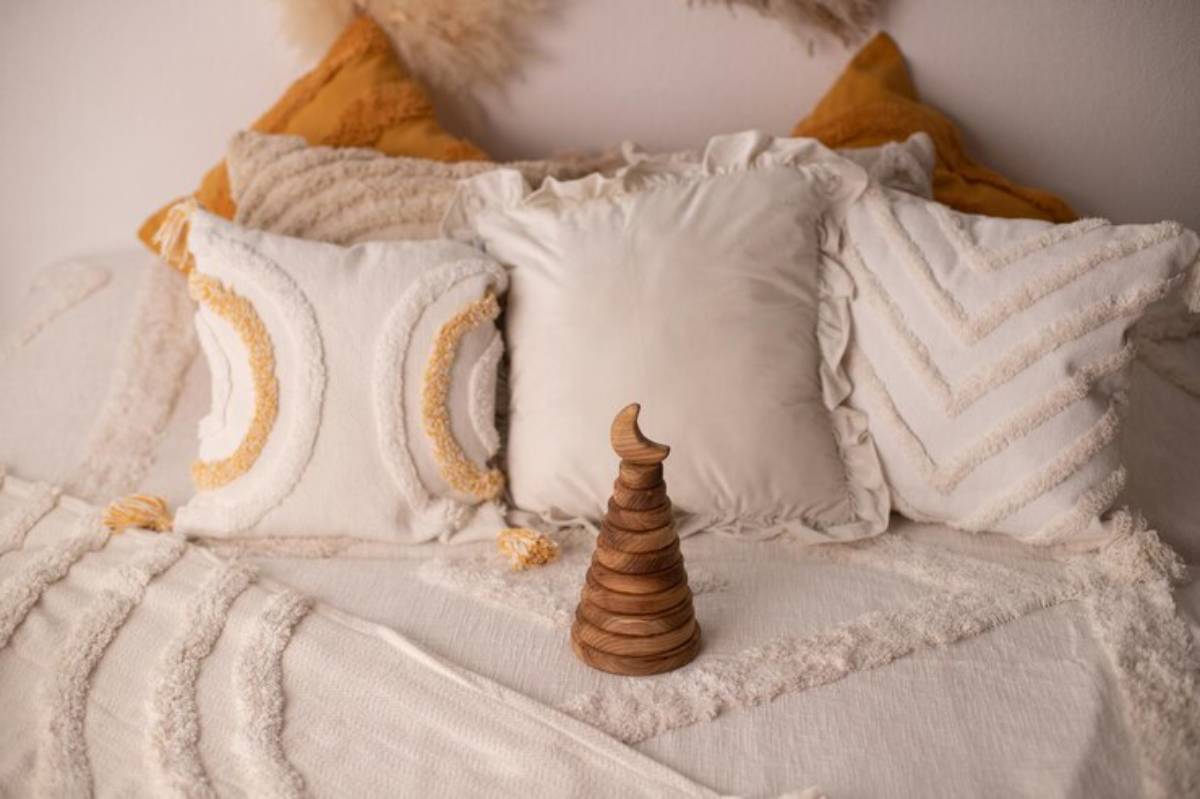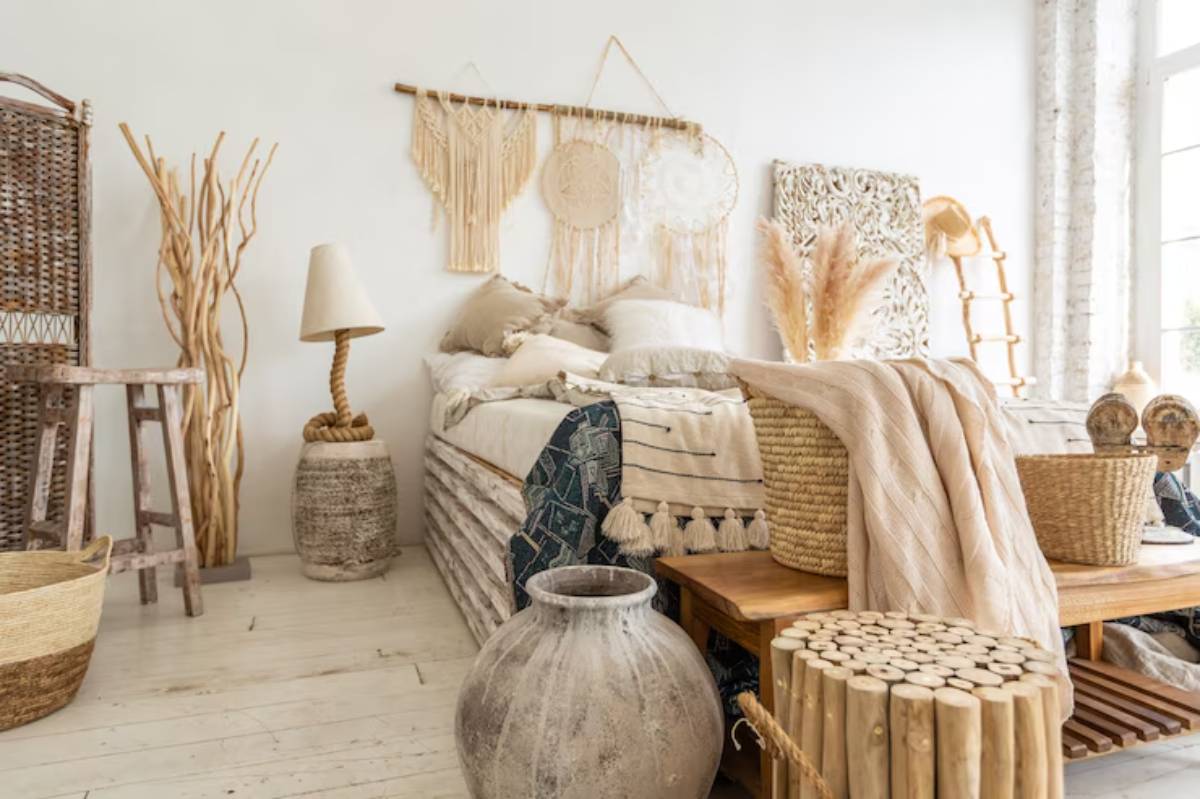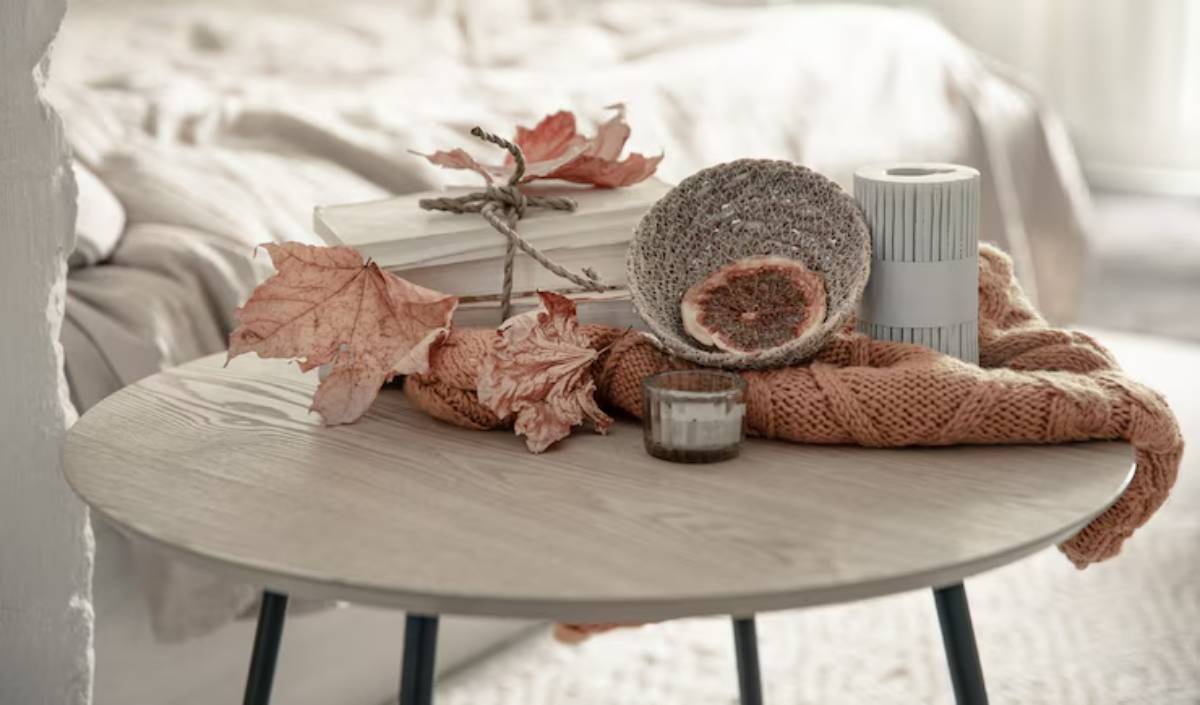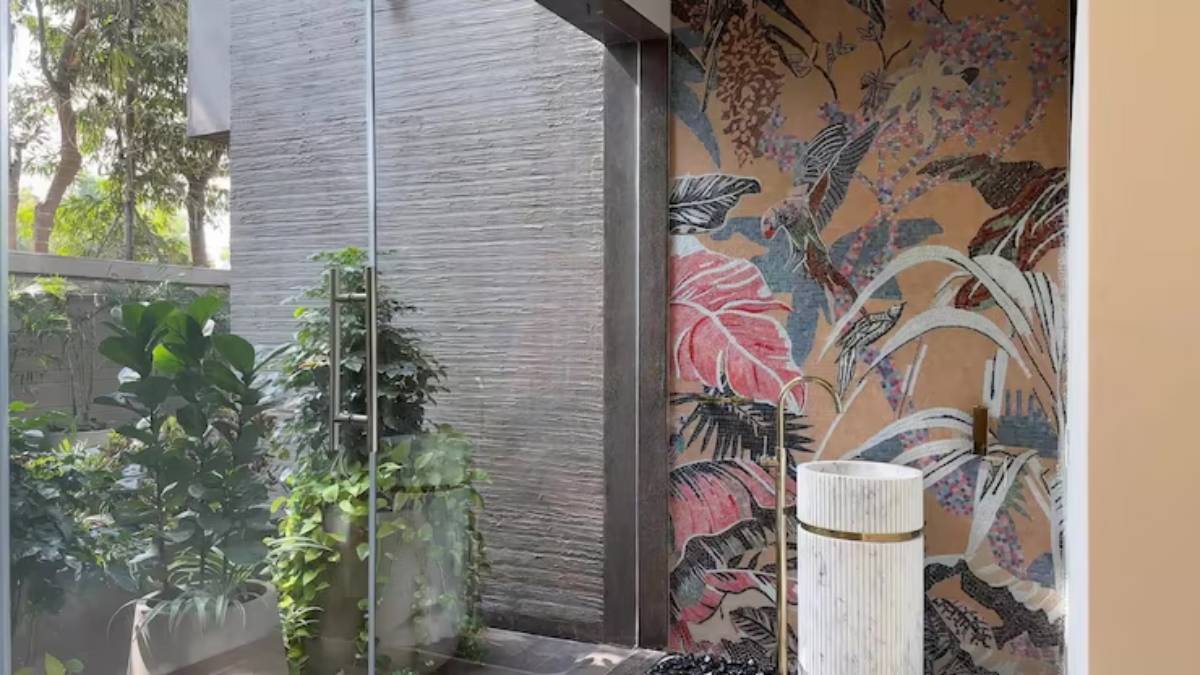
How to Mix Patterns in a Boho Home Without Overdoing It
You’ve likely seen those dreamy boho interiors on Pinterest—layered rugs, throw pillows in a medley of prints, eclectic curtains, and it all just… works. But when you try it yourself, it somehow ends up feeling more chaotic than curated. Sound familiar?
Welcome to the art of mixing patterns in a boho home—a process that looks effortless but requires a bit of know-how. Whether you’re working with florals, tribal prints, stripes, or global motifs, you can layer with confidence and create a rich, harmonious space. The trick? Knowing how to balance scale, colour, and texture.
This guide breaks everything down—from textile layering tips and expert design principles to practical steps you can implement immediately. Let’s turn your space from cluttered to curated.
Understanding the Core: What Makes Boho Pattern Mixing Work?
Boho design isn’t about perfection. It’s about freedom, expression, and creating a personal sanctuary filled with stories. Pattern mixing is essential to that expression, but it’s not a free-for-all.
Why Patterns Matter in Eclectic Design
Patterns tell a story. They bring energy, heritage, and emotion into a space. In boho interiors, they’re the beating heart of the aesthetic, evoking Moroccan souks, Indian textiles, desert tones, and jungle vibes all at once.
The Psychology Behind Harmonious Interiors
According to design psychology, our brains crave both variety and balance. Too much repetition is boring, and too much difference feels overwhelming. Mixing patterns successfully satisfies both. When done right, a well-layered space can actually reduce stress and increase comfort.
Key Pattern Elements to Understand
Before diving in, you’ll want to familiarise yourself with the foundational types of patterns:
- Geometric: Stripes, chevrons, or diamond shapes
- Organic: Florals, botanicals, and flowing lines
- Global/Ethnic: Tribal prints, kilims, ikat, batik, suzani
- Abstract: Artistic splashes, brush strokes, mixed media
- Texture-based: Woven baskets, macramé, chunky knits
Understanding these families helps you layer with intention.

Quick Guide: How to Mix Boho Patterns with Confidence
- Choose a cohesive colour palette (2–3 dominant shades max)
- Vary your pattern scales—mix one large, one medium, one small
- Anchor with a neutral base (walls, large furniture, rugs)
- Blend textures (woven, knitted, beaded) to soften contrasts
- Use solid colour blocks to give the eyes space to rest
- Repeat one or two motifs throughout to maintain unity
- Don’t forget vertical spaces—curtains, wall art, and hanging decor
- Edit ruthlessly—remove one element if it feels too much
Step-by-Step Guide: Practising Boho Pattern Mixing Like a Pro
1. Build from a Neutral Base
Start with large pieces in solid or subtle tones—think a beige sofa, a sisal rug, or linen curtains. This allows patterns to pop without competing.
Pro Tip: White isn’t your only neutral. Try warm taupe, terracotta, or earthy olive.
2. Choose a Unifying Colour Palette
Limit your colour family to avoid overwhelming the space. Even with bold patterns, sticking to 2–3 dominant colours can tie everything together.
Important: Avoid mixing warm and cool tones unless you’re confident in contrast balancing.
3. Layer from Large to Small Patterns
Use a large-scale pattern—like a patterned area rug—as your base. Then, build with medium motifs in throws or artwork, finishing with small prints in cushions or accessories.
Warning: Avoid clustering multiple large-scale prints in one zone (e.g., rug + curtains + wallpaper) or the space may feel heavy.
4. Use Texture as a Balancing Tool
Not all patterns need to be visual. Texture provides tactile interest that grounds your design. Think macramé, rattan, faux fur, or embroidered pillows.
Pro Tip: Use texture to give visual ‘breaks’ between bold patterns.
5. Repeat Motifs for Harmony
Repetition breeds familiarity. If you’re using tribal patterns, let that motif echo through art, textiles, or decor. This prevents the room from feeling disjointed.
6. Play with Pattern Placement
Place bolder patterns at eye-level or below, like cushions and rugs. Keep walls and higher spaces more muted to avoid visual overload.
Important: You can still feature statement walls—just balance them with minimalist furniture or plain floors.
7. Incorporate Global and Cultural Influences
Boho is inherently global. Combine Indian block prints, Berber rugs, or Peruvian throws—but respect their origins and don’t force cultural elements without context.
Pro Tip: Include a brief handwritten card or print explaining the story or artisan behind key pieces.
Pro Tips, Notes, and Warnings
Pro Tip: Group similar tones but different patterns to create a ‘layered neutral’ effect—ideal for entryways or bedrooms.
Important: Always test fabric swatches together before committing. Colours behave differently under natural vs. artificial light.
Warning: Avoid mixing too many cultural motifs in one room without coherence. It can unintentionally veer into caricature rather than celebration.
Best Practices & Additional Insights
Use the “60-30-10” Design Rule
This traditional formula applies brilliantly to eclectic spaces:
- 60% dominant colour (e.g., earthy base tones)
- 30% secondary hue (e.g., terracotta or teal accents)
- 10% surprise or contrast (e.g., mustard or indigo)
Create Mini Zones for Clarity
Divide open-plan spaces into pattern zones—e.g., florals in the dining nook, tribal geometrics in the lounge—to help contain visual energy.
If you’re working in a compact flat, try these small boho decor tips to avoid overcrowding.
Rotate Seasonally
Swap cushions, throws, or rugs seasonally to keep the look fresh. Patterns that feel cosy in winter (like dark florals) may feel too heavy in summer.
Bonus: This reduces the urge to redo entire rooms, saving both money and energy.
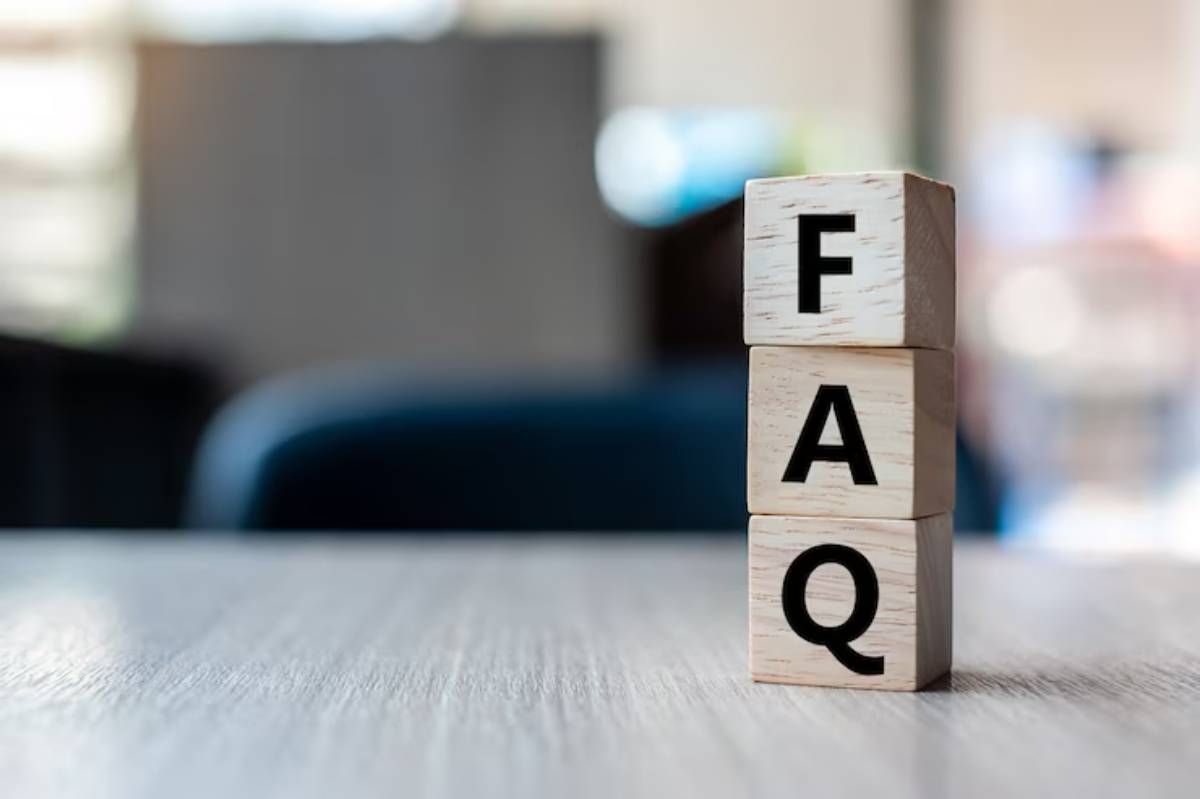
FAQs
What is the best way to start mixing patterns in a boho home?
Begin with a large anchor piece—like a patterned rug or duvet cover—and build around it using smaller prints and a consistent colour scheme.
Can I mix floral and geometric patterns in one room?
Yes, as long as the scale varies and the colours align. Floral curtains with geometric cushions, for example, can create balanced contrast.
How many patterns are too many in a room?
There’s no hard rule, but more than five competing prints in a small space often feels chaotic. Use neutral breaks and solid accents to counterbalance.
What if I live in a rental and can’t paint or renovate?
Use removable wallpaper, throw blankets, and layered textiles to bring in pattern without permanence. Try renter-friendly decor ideas to explore more solutions.
Does pattern mixing work in minimalist spaces?
Absolutely. Try layering tone-on-tone patterns—like cream stripes over beige embroidery—for a muted, minimalist take on boho style.
Style Your Boho Home with Confidence and Creativity
Mixing patterns doesn’t need to feel intimidating. With a few thoughtful strategies—like colour cohesion, scale variation, and intentional layering—you can create a space that feels rich, lived-in, and unmistakably you.
Remember, boho interiors celebrate creativity and imperfection. Trust your eye, experiment in small ways, and let your space evolve over time.
Want to take your styling game even further? Explore our full guide on how to create a boho bedroom without breaking the bank and turn your sanctuary into a masterpiece of layered expression.
Start layering. Start experimenting. And most of all—make it yours.
